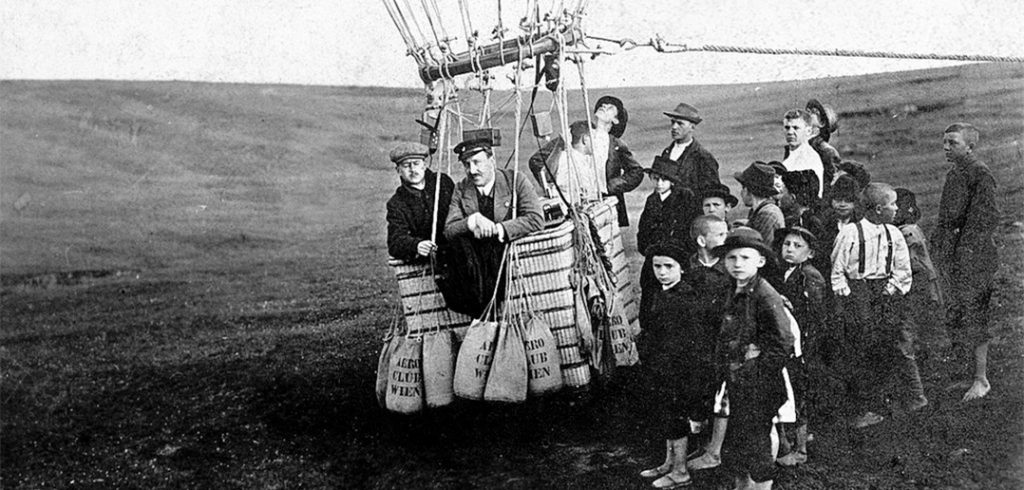One hundred years ago, on Aug. 28, 1911, Victor Hess took to the skies in a hot-air balloon to begin the work that would earn him a Nobel Prize in Physics.
At the time, scientists were puzzled by the fact that the air in electroscopes (instruments used to detect electrical charges) would often become electrically charged no matter how well the containers were insulated. Most physicists believed radioactivity from ground minerals was responsible for this. They suspected that the ionization levels in the atmoshere would diminish greatly at higher altitudes.
Enter a Jesuit scientist. In 1910, Theodor Wulf, S.J., measured ionization at the bottom and top of the Eiffel Tower in Paris. He found that ionization levels were puzzlingly higher at the top of the tower, some 300 meters above ground. But his results were not given unqualified acceptance by the scientific community, nor were the experiments of other scientists who made balloon ascents to record ionization. Their instruments developed defects at high altitudes, casting doubt on their measurements.
Victor Hess, a postdoctoral student at the University of Vienna, was in his late 20s, an accomplished balloonist, a dedicated scientist and an adventurous spirit. He had read about Father Wulf’s experiments and speculated that the main source of radiation could be located in the atmosphere rather than in the Earth.
But before he took to the skies, he did two key things: He determined the height at which ground radiation should stop producing ionization (approximately 500 meters), and he designed his instruments so they would not be damaged by temperature or pressure changes as he went up in his balloon. He then made 10 daring ascents—two in 1911, seven in 1912 and one in 1913—rising to more than 17,000 feet above ground to take his measurements.
What Hess found confirmed Father Wulf’s measurements. The radiation levels increased the higher he climbed. In fact, Hess found that the ionization rate increased approximately fourfold over the rate on the ground. He interpreted these results to mean that radiation enters the atmosphere from outer space.
We now know that cosmic rays are actually high-energy particles that flow into our solar system from far away in the galaxy. But at the time, of course, no one really believed radiation could be coming from a celestial source. Hess had ruled out the sun as the source of the radiation, as he made several of his balloon ascents at night and one during a total eclipse.
“The results of my observation,” he concluded, “are best explained by the assumption that a radiation of a very great penetrating power enters our atmosphere from above.”
This was the discovery that would earn him a 1936 Nobel Prize in Physics. Two years later, Hess arrived at Fordham. In his lab in Freeman Hall, he helped develop a method for detecting minute traces of radium in the body. A company hired him to test its radium-dial workers—women who hand-painted watch dials so that the faces would glow at night. It was probably some of the first environmental testing of its kind in the workplace.
In 1958, Laurence J. McGinley, S.J., president of Fordham, presented Hess with the University’s highest honor, the Fordham University Insignis Medal.
“He has ever been zealous to develop in his students the love of research and the tireless dedication to it which have always marked his life,” the citation reads. “Both as explorer of the secrets God has hidden in nature, and as interpreter of those secrets to his students and to the world, Professor Hess has given a notable example of how the curiosity of the true scientist and the faith of the devout Catholic can dwell harmoniously under one roof.”
—Martin A. Sanzari, Ph.D., Assistant Professor and Director of the Engineering Physics Program, Fordham University


